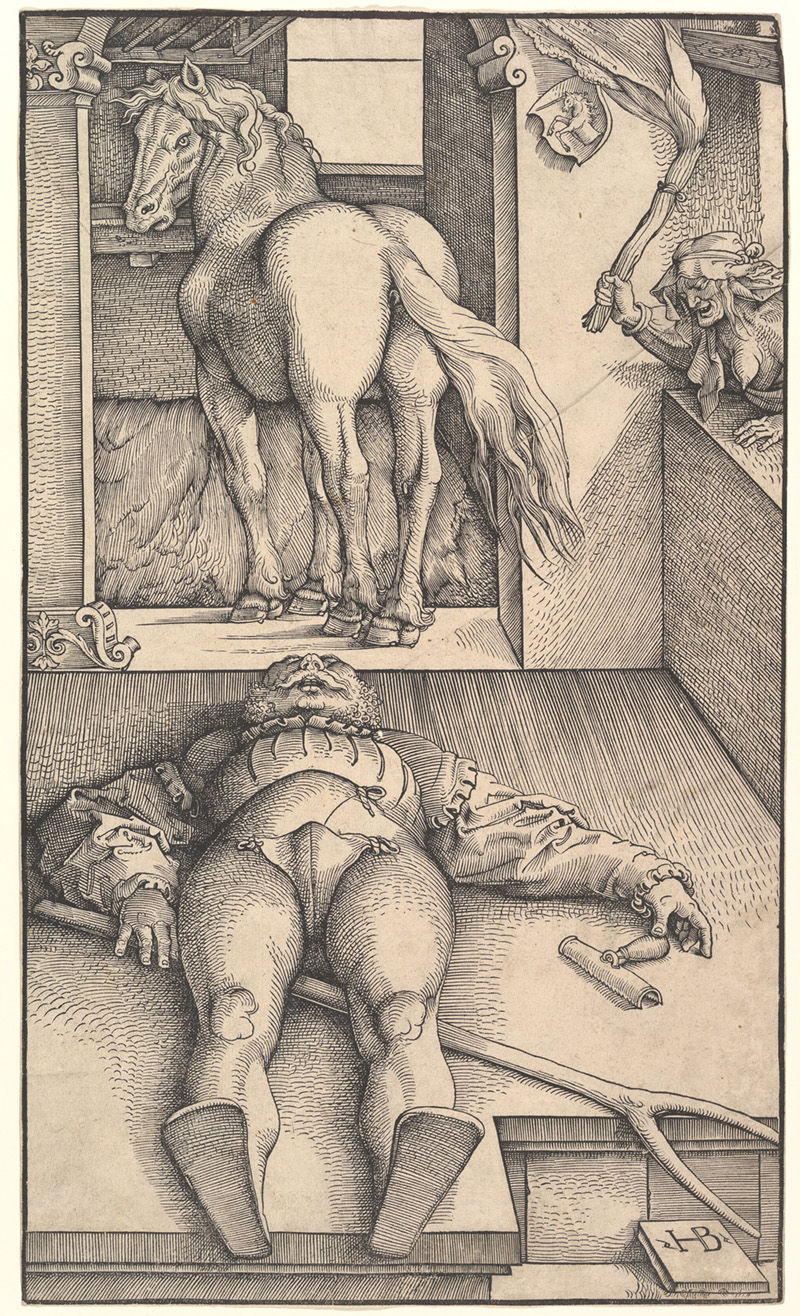
Hans Baldung Grien’s print The bewitched groom (c. 1544) is a woodcut on paper. The work features three main protagonists: a stableman, a horse, and a witch. The stableman (formerly known as a ‘stable-groom’) lies rigid, eyes wide, with an abandoned pitchfork and currycomb by his side.1 Filling the doorway is the commanding figure of a horse, glaring back at the unmoving man, potentially implicated in the witch’s scheme. From Baldung Grien’s arrangement of the image, we can deduce that the instigator of this unfortunate event is the bare-breasted hag, who leers from an adjacent window with a flaming torch in hand.2 This aged woman is posed as a villain, whose supposed bewitchment of the horse has led to the man’s morbid condition.
As the late professor Dale Hoak remarked, some commentators have speculated that the artwork represents a metaphorical self-portrait. Others have posited that it is an extension of the artist’s obsession with the metaphysical.3 While the work’s metaphoric message remains ambiguous, it is clear that the suspicion of witches in sixteenth-century Europe was propagated by artists and folklore alike. This print is also one of the first demonstrations of ‘foreshortening’ as a compositional technique, and is thus a celebrated moment in Western Art history.
A printmaker, designer, and illustrator, Hans Baldung Grien (b. 1484 Schwäbish Gmünd, Germany; d. 1545 Strasbourg, France) trained under celebrated Northern Renaissance master Albrecht Dürer. The artist’s technique recalls Dürer in style and allegorical subject matter; however, unlike his tutor, Baldung Grien demonstrates a steadfast interest in spells, mythology, and the iconography of the witch.
- A currycomb is a brush with rows of teeth or ridges, used for grooming horses. Refer to: “Definition of currycomb,” Collins English Dictionary, https://www.collinsdictionary.com/dictionary/english/currycomb.
- Dale Hoak, “Art, culture, and mentality in Renaissance society: The meaning of Hans Baldung Grien’s Bewitched Groom (1544),” Renaissance Quarterly 38, no. 3 (1985): 488–510.
- Ibid.
Hans Baldung Grien
The Bewitched groom c. 1544
woodcut on paper
sheet 33.9 x 20 cm
Reproduced courtesy The Metropolitan Museum of Art, New York, Rogers Fund, 1917
www.metmuseum.org
Exhibited artwork on loan from the Art Gallery of South Australia
Bequest of David Murray 1908
